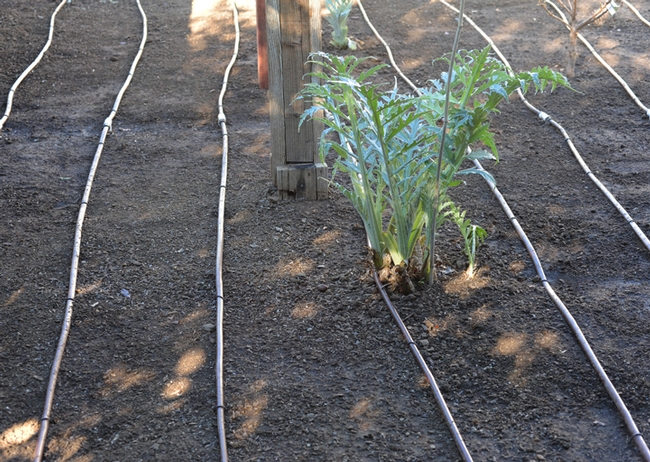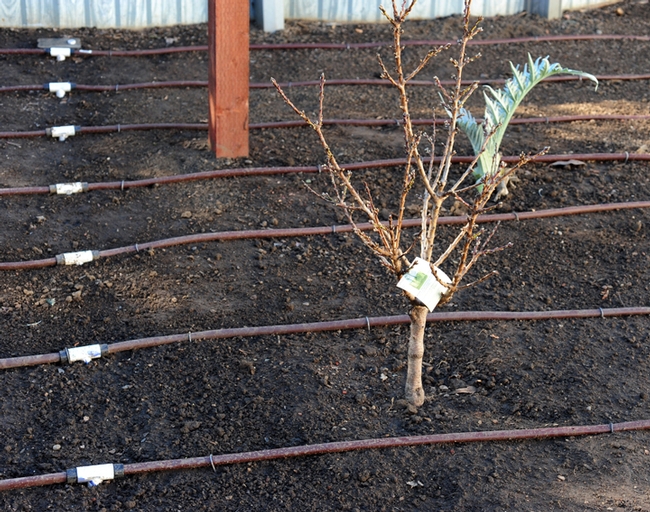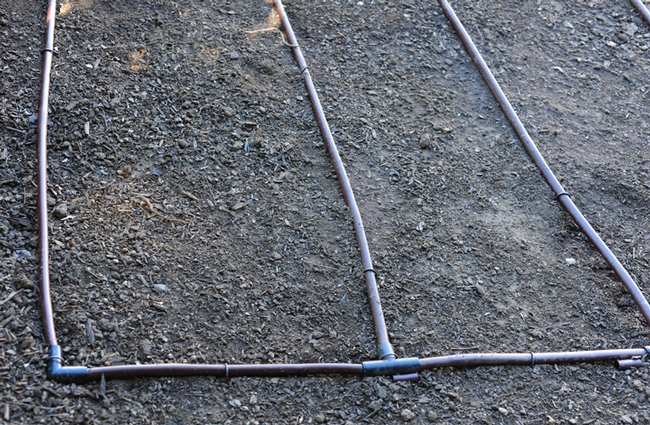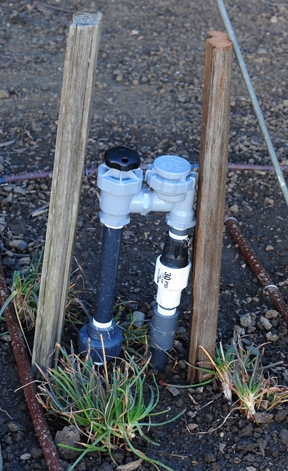How does your garden grow? In a drought, consider drip
Mary, Mary, quite contrary
How does your garden grow?
--English nursery rhyme
How will your garden grow during California’s drought emergency? Gov. Jerry Brown says the state is facing the worst drought in its recorded history.
We urban gardeners may turn quite contrary if our gardens don't grow.
Alternative: Consider installing a drip irrigation system.
Why a drip system? It’s target watering. It’s uniform watering. It’s non-wasteful watering. You don’t want to water the leaves, the space between the plants, or worse, water the sidewalk or let the water gush into the gutter.
Drip irrigation is better for plant health. Plants thrive with drip because it waters them slow and deep where the roots are. You’ll likely minimize weed growth. In comparison to overhead sprinklers, the smaller, targeted area means that weeds will have less opportunity to spring up and try to take over your garden, Gangnam Style. And by not watering the leaves of your plants or allow them to collect standing water, you can reduce diseases.
Drip irrigation is simply a network of pipes, tubing, valves and emitters. Water “drips” or “trickles” directly to the roots.
The concept is not new. Back in the first century, Fan Sheng-Chih Shu wrote about what we now consider a “primitive” drip irrigation system, but one that definitely worked well: Farmers buried perforated unglazed clay pots and filled them with water. They refilled them as needed.
Today’s modern drip irrigation system for urban gardeners includes an irrigation controller with automatic valves or a manual system (shown). If it's automatic, a timer controls the valves and waters the plants while you do something else - like enjoying a glass of lemonade on the back porch, watching your favorite movie, or vacationing in Hawaii. Note: It's a good idea to set your timer for early in the morning, before 8. There's less evaporation.
Of course, there can be disadvantages to the drip system. The key disadvantages are the initial cost of the equipment and labor. Then, too, you must closely monitor the system to ensure the emitters aren’t clogged, or thirsty rodents aren’t gnawing through your plastic pipes.
Find more about drip irrigation on the Sonoma County Master Gardeners website.
Bottom line: A drip irrigation system is often a better alternative to overhead sprinklers or the hand-watering method. Expect to conserve water, save on your water bill, grow healthy plants with fewer weeds and diseases, and save time and effort in doing so.

An artichoke in the drip grid. This area is ready for planting. (Photo by Kathy Keatley Garvey)

A newly planted peach tree among the drip lines. (Photo by Kathy Keatley Garvey)

Corners of the drip grid. (Photo by Kathy Keatley Garvey)
Comments:
By the way, this peach tree is thriving! We couldn't ask for better growth.



Posted by Brook Gamble on January 22, 2014 at 10:09 AM